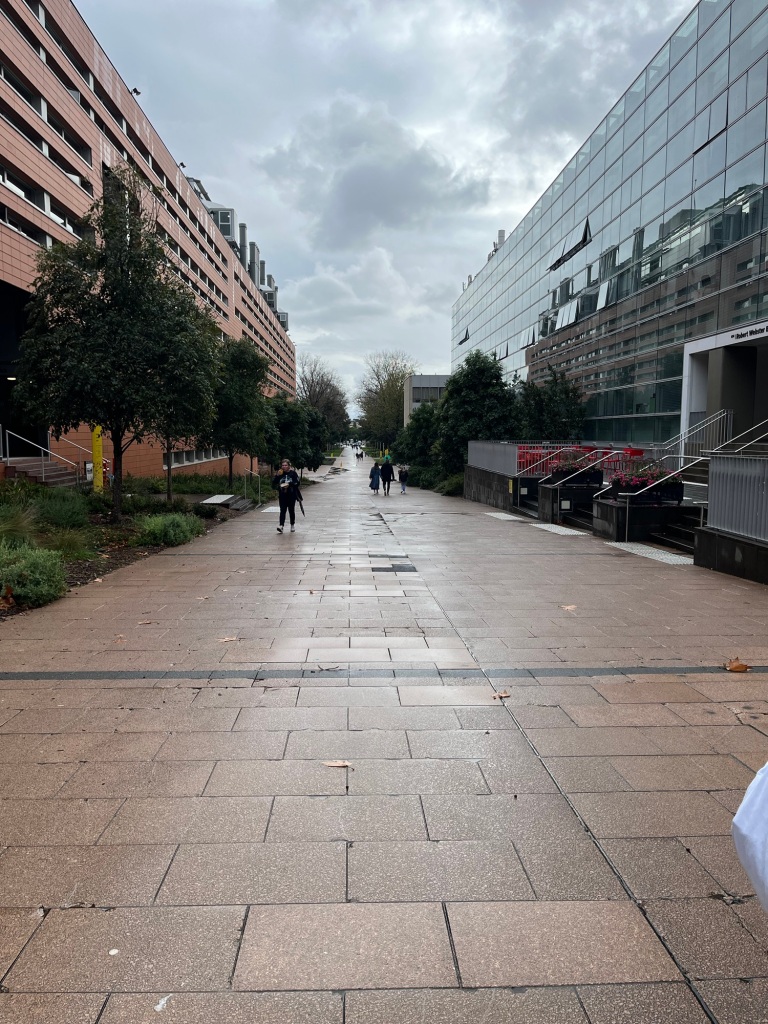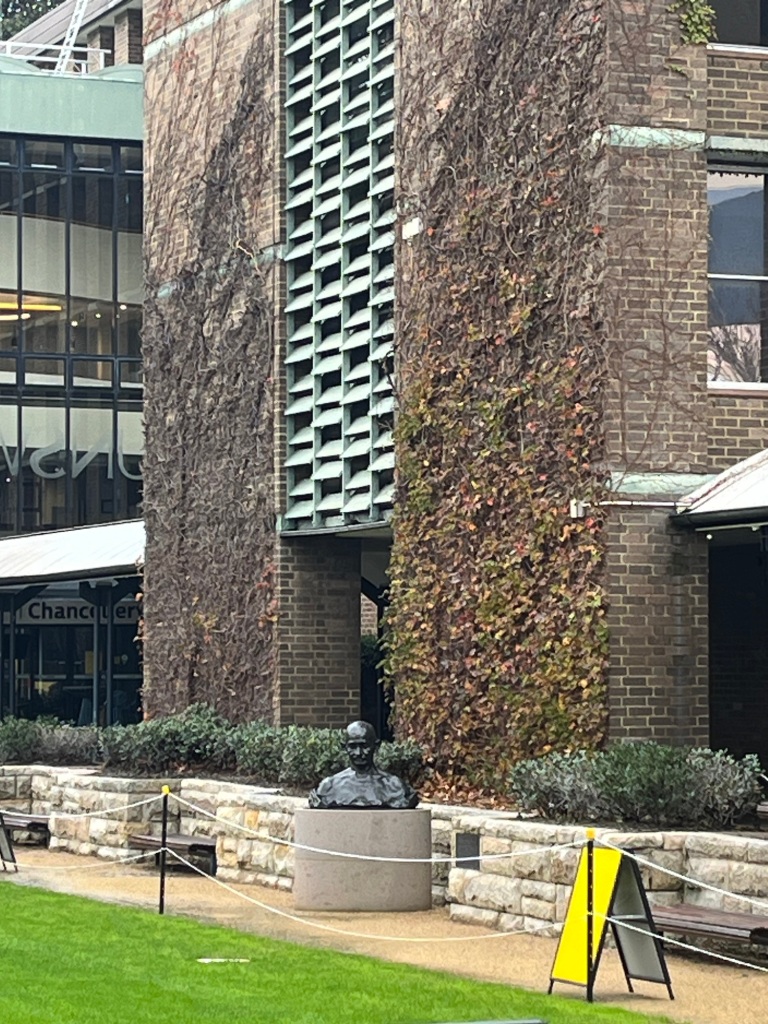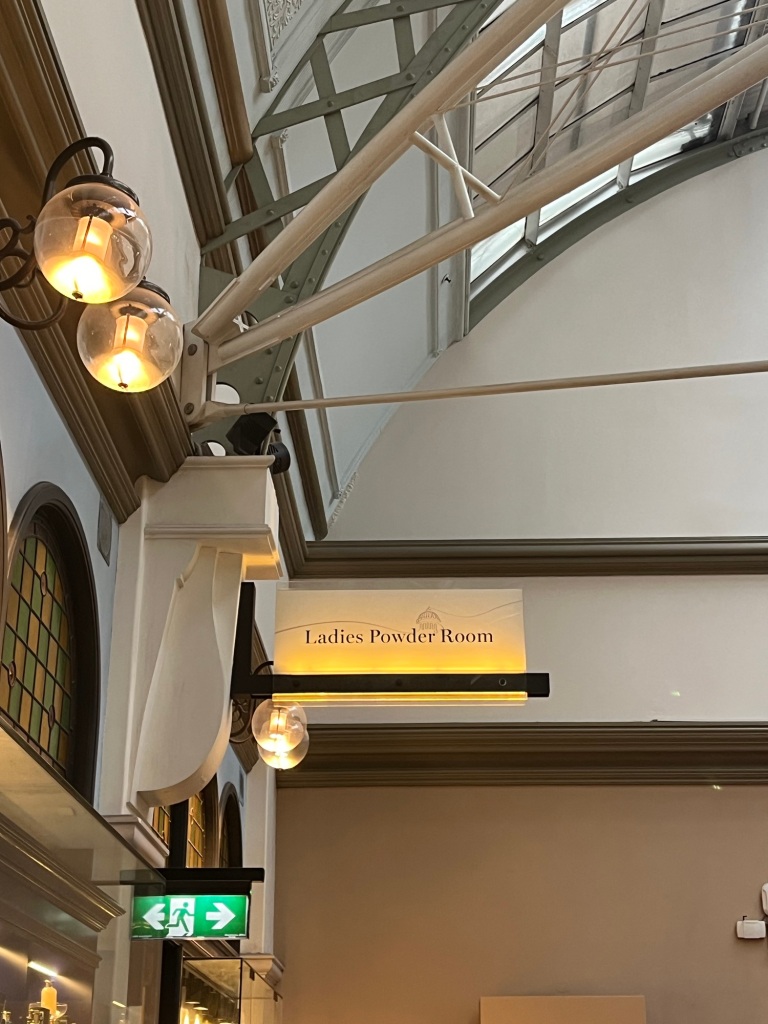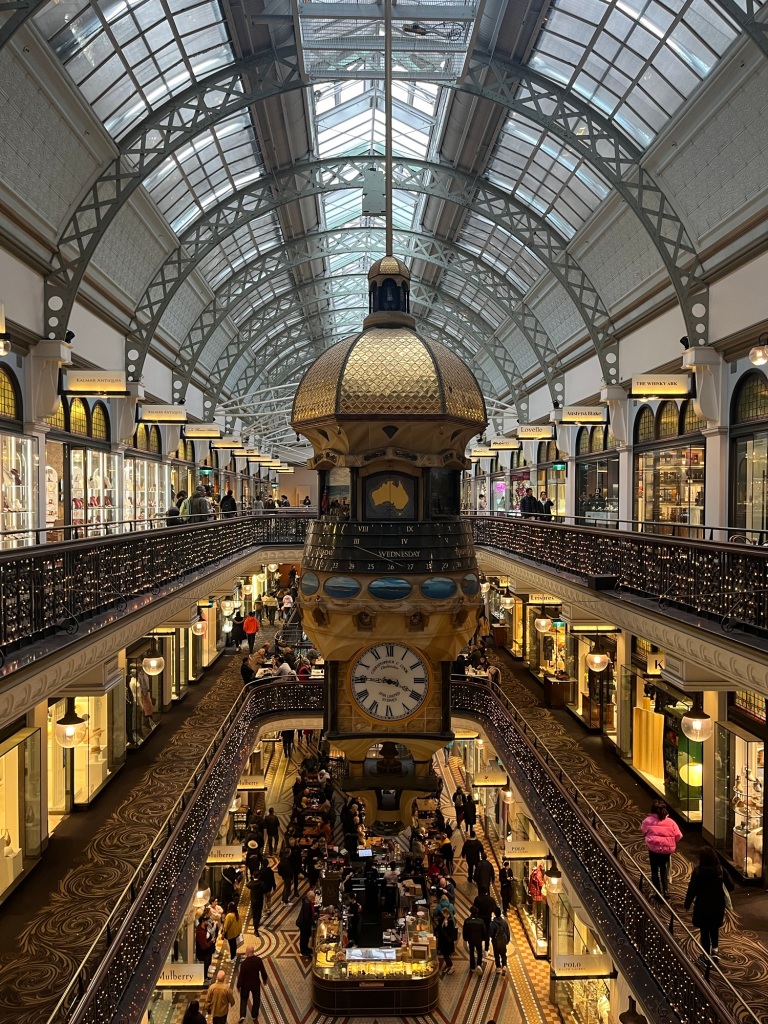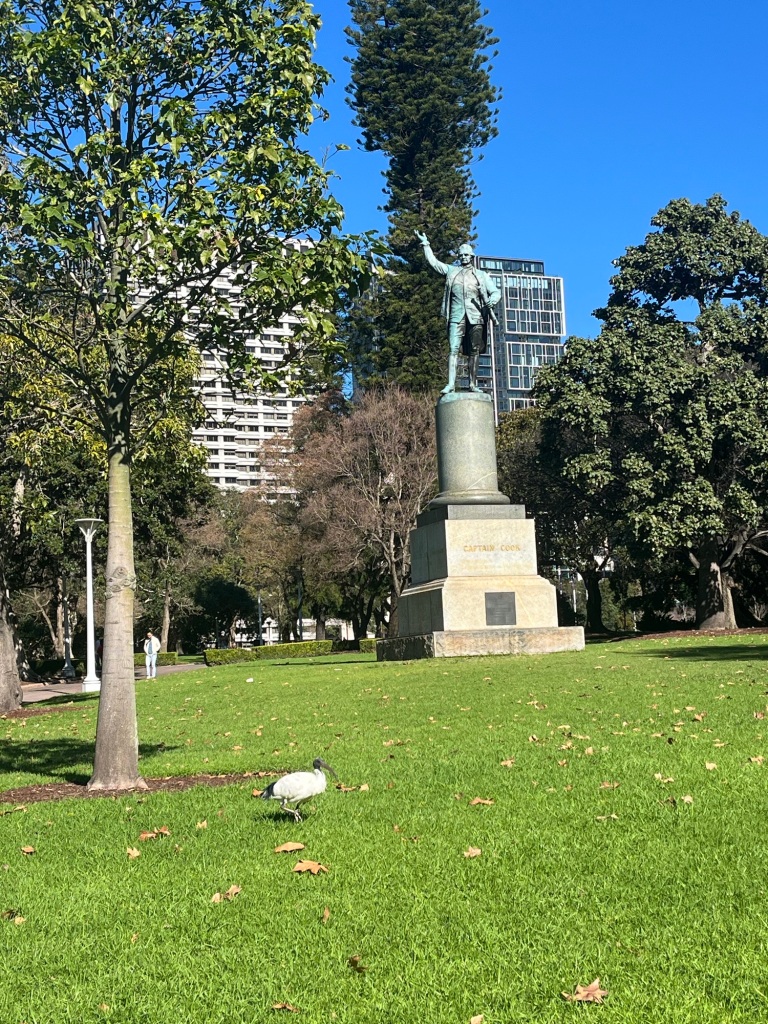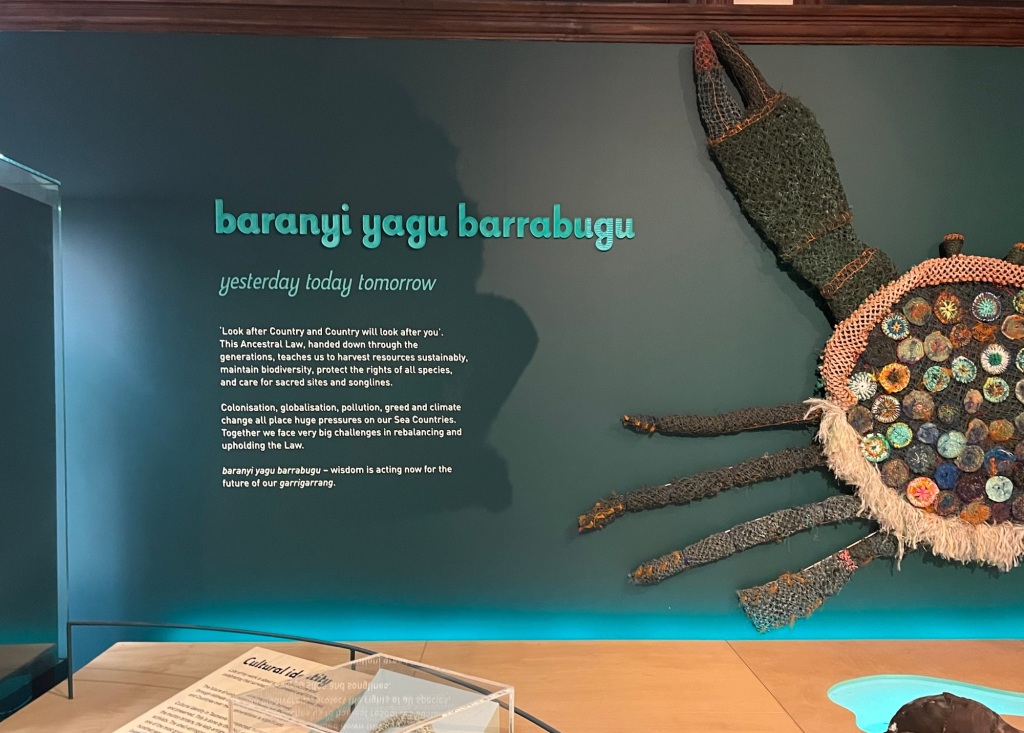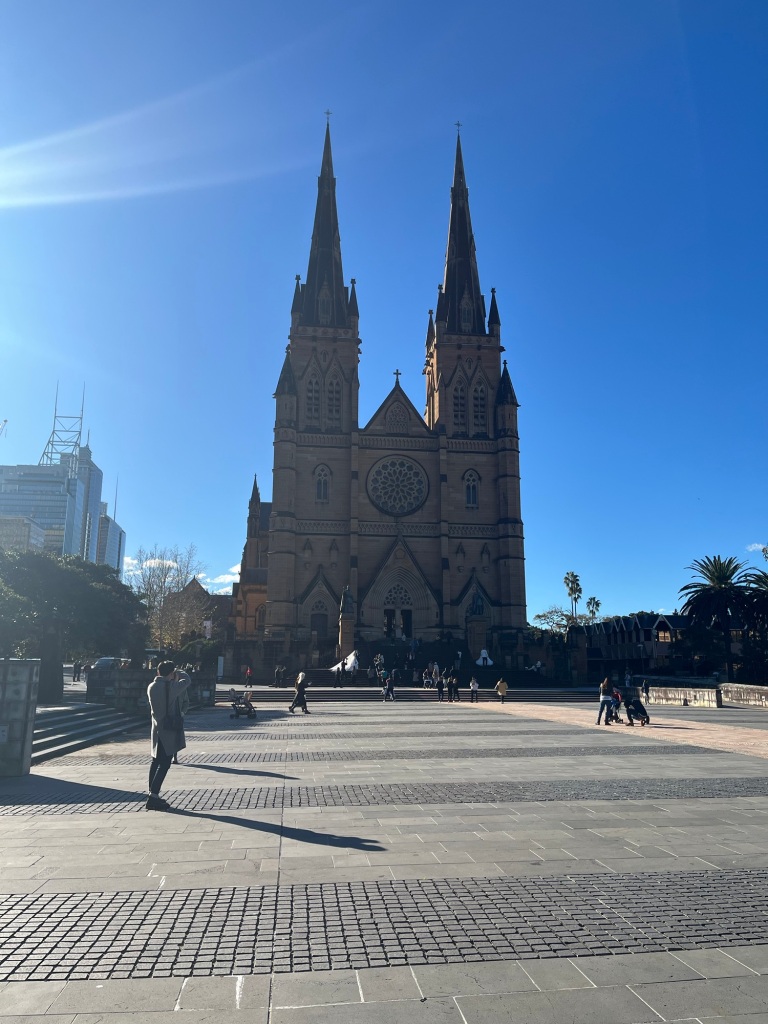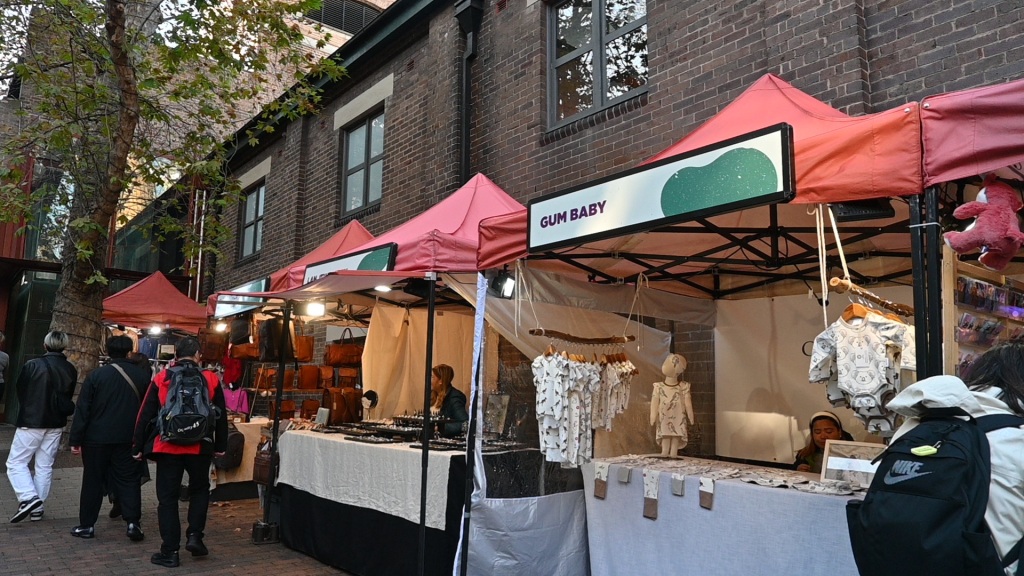On a bright, sunny Thursday morning, we set out to the nearest sports ground. It was not The Lords, Eden Gardens, or even Melbourne, but it was the closest we had ever lived to a cricket ground, and we didn’t want to miss a chance.

The Sydney Cricket Ground is Don Bradman’s home ground. He had famously declared as a child that he would never be satisfied until he played at the SCG. And play he did.
The Australian pride in The Don was evident in the tour guide’s tone and the frequent mention of what Bradman meant to the SCG.

I was immediately in awe of the young woman (She would be over sixty) who took us around the stadium. She reeled away records and facts about the performances on the ground by domestic and international cricketers.
However, first things first. The tour started on an unpleasant note for my husband and daughter because of a snide remark. My daughter, excited to see a life-sized Kohli cut out inside the tiny enclave, which they called the museum, slunk away to take a picture.

As a courtesy, when the guide asked whether we were excited, I mentioned that my daughter had already spotted her favourite.
The guide replied cheekily, “King Kohli? Well, we’ll see him at the end of the year.” (Referring to India’s tour of Australia later this year). “He has to prove himself overseas, doesn’t he?”
My husband bristled. “Again?” he asked in a low voice, which I am not sure if she heard or pretended not to hear.
My daughter turned around with a smirk, “Nonsense!” she mouthed soundlessly.
So, that was not an encouraging start to the tour. It did not help that we had an Indian gentleman in our group who insisted on drawing comparisons between everything—the ground, cricketers, matches, and so on.
Cricket arouses passion and nationalistic fervour like no other game in India. Out of the eight tour group members, five of us were Indian fans. The guide was as ready with anecdotes and jokes as the audience was with the records that mattered.

While the guide highlighted Indian accomplishments with equal sincerity as the domestic ones, we still couldn’t contain our excitement when we saw some of the names hung up on boards, written on the wall, or scribbled. Yes, apparently, it is a new tradition to scribble one’s accomplishments on any surface one could find.

Why do accomplishments matter more when they are on foreign soil? Why does our chest swell with pride when we see the names of our heroes offered a respectable space on international walls? It may be the outcome of years of subjugation and colonisation. We use any opportunity to show that we are always strong, despite how the world sees or continues to see us.
I was glad my daughter learned how long it took to acknowledge women fans of the game. When the SCG opened, women spectators were considered guests of the male visitors, and the men had to stand up if a woman did not have a seat. When the number of women fans grew, they built the Ladies Pavilion, a separate seating arrangement for women. It was not until 1974 that women were given full membership access as men.
The tour included a peek into the dressing room for both the visiting and home teams. To reach the visitor’s dressing room, we walked up the steps used by the visiting team to enter the ground. If the guide hadn’t mentioned it, we would have missed this modest plaque proclaiming the gate as the Brian Lara – Sachin Tendulkar Gates. It was unveiled in April 2023 to commemorate Sachin’s fiftieth birthday and thirty years of Lara’s 277 at the venue.

As we filed into the rather narrow visitor’s dressing room, the guide shared an interesting story about a lone seat near the steps that led to the men’s washrooms. Apparently, it was the only seat available to an eighteen-year-old Tendulkar when he first played at the SCG after his seniors took their favourite spots. He went on to score an unbeaten 148 in the third test. Since then, apparently, he favoured that seat the most. Cricketers are known to have their quirks and superstitions. However, it was difficult to say whether the story was true or the guide was merely humouring a group of people whose eyes lit up at the mention of Tendulkar.

Not surprisingly, the most vocal fan amongst us took the opportunity to take a photo of himself in the same seat, ignoring that the doorway beside it opened into a row of urinals.
Fandom was at its peak. I wonder what he would have done if the guide had known and shared more details about the players’ daily routine.

The group joked and laughed about the scores scribbled on the dressing room furniture, and there was a warm camaraderie despite the opposing camp vibes.
However, the air turned chill as we entered the home team’s dressing room. The interiors were more tasteful, and we couldn’t help but notice the snacks and food corner, which was missing in the visitor’s dressing room. I was a bit incensed and did not take any pictures of the room.
The guide quickly grasped our silent resentment and shrugged with a ‘home team advantage’ remark. It became clear why overseas accomplishments mattered more.
The saving grace of the moment was a framed message in the room. A few handwritten words from a twenty-year-old Bradman found in a child’s notebook takes the place of pride on the home team’s dressing room wall. The guide gushed about a young Don’s beautiful handwriting.

“If it’s difficult, I’ll do it now. If it’s impossible, I’ll do it presently.”
Certainly, Sir Bradman. You did it.
P.S. You can read the previous part here. The concluding part is here.
